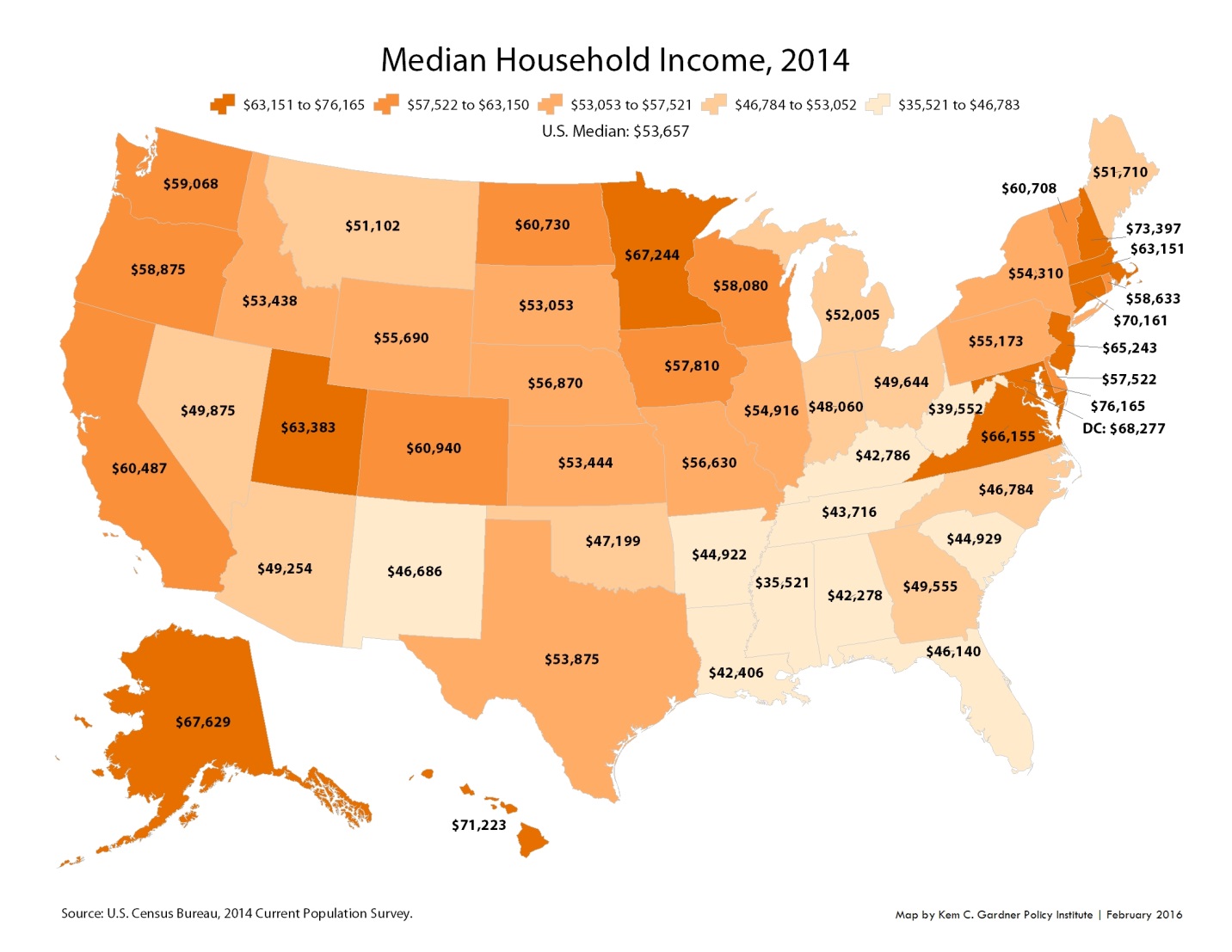Blog Post
Insight: How Meaningful are Median Household Income Estimates?
By: James A. Wood
Utah’s median household income in 2014 was $63,383, the tenth highest among all states and DC. This is not unfamiliar territory for Utah. The state has consistently been ranked among the top states in median household income. In 2008, Utah ranked fifth in median household income with a record high of $68,765 in inflation adjusted 2014 dollars. While these are impressive numbers, they are numbers that should in fact be used with caution.
In a political season, median household income estimates are used endlessly to measure the economic well-being and inequality of income. In isolation, however, the median household income estimate is a rather blunt instrument for framing public policy prescriptions or making pronouncements on economic well-being.
First, the median household income estimate is a snapshot at a particular moment in time. And the snapshot in 2000 consisted of a different set of households than the 2014 snapshot, so comparability is a bit suspect and even more of a problem the further back in time one measures. Moreover, not only do we have a different set of households in our 2014 snapshots, but we also have households with different demographic characteristics.
Changes in demographic characteristics very likely affect the median housing income measure. For instance, an important demographic change that has begun to affect the median income measure is the retirement of the baby boom generation. It’s inevitable we will have a greater share of senior households in 2016 than we had in 2006. Senior households have substantially lower incomes; hence the growing share of low income senior households will put downward pressure on future median income estimates. There are other demographic changes related to household size, living arrangements, etc., that make comparisons of median household income over time somewhat misleading. Even using the median household income estimate for point-in-time comparisons, say Utah compared to California in 2014, has limitations since the comparison does not take into account the differences in the cost of living between the two states.
Finally, as a measure of well-being, median household income estimates have serious limitations. To say that a household is worse off in 2014 than it was in 2000 because real median income has dropped by 7.8 percent, as is the case in Utah, is not only statistically flawed, but again misleading. What the median household measure does not capture is the tremendous advances in quality of life. For example, the advances in health care, the improvement in automobile safety, the nearly limitless entertainment options on the internet, and—a personal example—the pulmonary relief I get from two asthma drugs introduced in 1997 that changed my life.
James A. Wood is the Ivory-Boyer Senior Fellow at the Kem C. Gardner Policy Institute.

